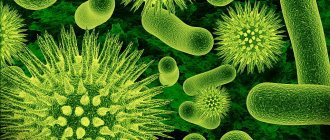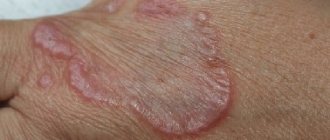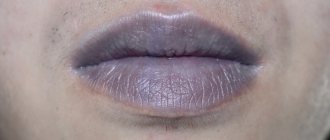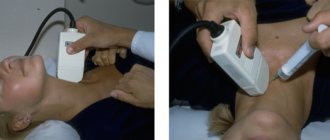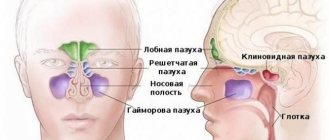Arthritis
is an inflammatory disease of the joints, which can occur in an acute form or, in the absence of timely treatment, become chronic.
This is an extremely common disease in the CIS, which is especially common in women over 45 years of age
.
According to medical reports, among diseases of the musculoskeletal system, arthritis is one of the most common causes of temporary or permanent loss of ability to work, including severe disability
. Symptoms of arthritis can begin in a person of any gender and age - often even in children. According to statistics, every 100th person suffers from joint inflammation. And in the age group over 60 years, the incidence rate can reach 80%. What are the early symptoms of joint arthritis and the prerequisites for the development of the disease?
Arthritis is an inflammatory disease of the joints
Causes of Arthritis
Arthritis is a consequence of damage to the articular cartilage or the entry of microorganisms into the synovial fluid.
In the first case, the pathology occurs due to degenerative processes in tissues due to injury or osteoarthritis. The causes of inflammatory arthritis are infection and waste products of microorganisms when:
- migration of the pathogen through blood and lymphatic vessels from nearby tissues;
- infectious diseases affecting the entire body - tuberculosis or gonorrhea;
- toxic-allergic effects of by-products of microorganisms;
- an allergic reaction to the body’s own tissues after an infection or in the presence of a permanent focus of inflammation, accompanied by a disruption in the functioning of the immune system;
- injury to the joint and infection through the wound or aseptic inflammation.
The following factors contribute to the occurrence of the disease:
- hereditary predisposition;
- increased load on the musculoskeletal system;
- infectious diseases;
- consuming large amounts of caffeine;
- smoking;
- excess weight;
- allergic reaction;
- metabolic disorders;
- traumatic injury;
- hypovitaminosis and lack of nutrients;
- pathology of the nervous system;
- malfunctions of the immune system;
- improper diet, consumption of alcoholic beverages;
- hormonal disorders;
- stinging insect bites;
- hypothermia of the body.
Diet for rheumatic diseases - recommended foods
A diet for rheumatoid arthritis should be rich in omega-3 fatty acids.
They effectively relieve inflammation. Their source is fish, especially sea fish (for example, salmon, mackerel, herring, halibut, sardines). People suffering from RA should eat fish at least twice a week, 100 g each. It is worth remembering that this should be oven-baked or steamed fish, not fried. Other sources of omega-3 fatty acids are: flaxseed and rapeseed oil, hemp oil, walnuts. It is advisable to include foods in the menu in small portions every day.
However, keep in mind that foods such as pumpkin seeds, sunflower seeds, pumpkin seed oil, grape seed oil, sunflower oil and corn oil should be limited in the diet due to their high content of omega-6 fatty acids. Excessive intake of omega-6 fatty acids over omega-3 fatty acids increases arthritis symptoms.
Vegetables and fruits are also mentioned among the foods especially recommended for rheumatoid arthritis. They are high in antioxidants and dietary fiber to reduce inflammation. It is recommended to include 500-700 g of vegetables and 200-400 g of fruits in the diet.
When choosing cereal products, you should focus on whole grains. They contain more dietary fiber, which lowers CRP levels (an indicator of inflammation) than pure white flour products. Therefore, the following are especially recommended for consumption: thick cereals (buckwheat, pearl barley), cereals (oatmeal, spelt, rye), whole grain pasta, wholemeal bread, brown rice, bran. However, it is best to limit your consumption of potatoes, which have a high glycemic index and much less fiber than cereals or rice.
Vitamin D deficiency can also worsen symptoms. For this reason, you should not forget to include fish in your diet, and you should also add vitamin D in the fall and winter (and in some cases also in the spring and summer) and get outside.
Classification
Arthritis, depending on the cause and clinical form, is of the following types:
- rheumatoid arthritis associated with malfunctions of the immune system;
- rheumatic, with chronic connective tissue disease with predominant damage to the heart and joints;
- ankylosing spondylitis, or ankylosing spondylitis - inflammation of the joints of the spine;
- infectious, with direct penetration of infectious agents into the joint;
- reactive arthritis - an immune response to a previous infectious disease;
- psoriatic arthritis is a chronic immune-mediated inflammatory disease of the osteoarticular system that develops in patients with psoriasis;
- gouty – occurs due to the deposition of uric acid in the joints;
- inflammation in systemic connective tissue diseases, for example, systemic lupus erythematosus;
- arthritis due to diseases of the gastrointestinal tract, lungs and other organs and systems;
- traumatic, occurring after an injury;
- juvenile idiopathic arthritis in children under sixteen years of age.
Based on the number of joints affected, monoarthritis is distinguished with inflammation of only one, oligoarthritis, if two or three areas are affected, and polyarthritis - a disease of more than three joints.
The process can be acute or chronic. In the first case, it develops rapidly, accompanied by severe pain and inflammation in the tissues. Chronic disease progresses gradually, slowly turning into a serious disease.
Diet for rheumatic diseases - what to avoid
A diet for rheumatoid arthritis should exclude foods rich in saturated fats and trans fats. These include: fatty meat (pork, beef), fatty dairy products (milk 3.2%, yellow cheese, blue cheese, processed cheese, full-fat cottage cheese, cream) and sweets, salty snacks, fast food, fast food, soups and sauces.
All products high in preservatives, dyes, flavors and other enhancers are prohibited. You should rely on natural, unprocessed foods.
Sugar should also completely disappear from the diet. It is important to limit your salt intake, the excess of which leaches calcium from the body. Instead of salt, you should use spices such as turmeric, garlic, ginger, anise, cloves, savory, tarragon, basil, thyme, mint, marjoram. In this case, you should avoid hot spices - chili, hot pepper.
It is also very important to eliminate or at least significantly reduce alcohol consumption. All carbonated and non-carbonated drinks, flavored water, and syrups for mixing with water should also be excluded. It is necessary to reduce the consumption of strong coffee and tea. It should be replaced with water in an amount of at least 1.5-2 liters per day.
Arthritis symptoms
Manifestations of the disease depend on its clinical form and severity of the process. The main symptoms of arthritis include local manifestations of inflammation in the joint - pain, redness and swelling of surrounding tissues, limited mobility, deformation as pathological changes progress. There is also a local increase in temperature, the affected area becomes hot when touched.
Infectious
The course of the disease depends on the type of pathogen. Often there is a sharp increase in temperature, chills, headache, and weakness. Tuberculous arthritis occurs in a chronic form, is difficult to treat and leads to severe dysfunction of the affected joint. With gonorrhea, as a rule, acute serous inflammation develops. Viral lesions go away after the infection is cured.
Gouty
Gout is a metabolic disorder that is accompanied by the deposition of uric acid salts - urates - in the joints. They penetrate the tissues, forming gouty nodes or tophas. The metatarsophalangeal joints of the thumbs are usually affected first, followed by arthritis in other areas. During an exacerbation of the disease, acute inflammation develops with tissue swelling and severe pain. After several attacks of gout, the joint becomes deformed and its function is impaired.
Rheumatoid
An autoimmune reaction develops with damage to the body’s own tissues, including joints. The causes of the disease have not been precisely established, but it is known that inflammation is triggered by infection in the body. At the onset of the disease, there is an increase in body temperature, the patient is worried about morning stiffness - a gradually passing limitation of mobility after waking up, pain and swelling at the site of inflammation. Symptoms may spontaneously disappear for several months, followed by exacerbation and progression of the disease. Damage to the hand and fingers is typical, but there are cases of atypical reactive arthritis with inflammation of the knee or shoulder joint. Gradually, without treatment, articular cartilage is destroyed, connective tissue grows, subluxations and dislocations occur, leading to disability of the patient.
Traumatic
Develops after injury to large joints - hip, knee, shoulder and others. There is pain, swelling and crunching when moving. With a closed injury and aseptic inflammation, spontaneous recovery is possible. With an open wound, the infection penetrates deep into the tissue and can cause purulent inflammation.
Psoriatic
It is characterized by damage to the terminal interphalangeal joints of the fingers and nails with simultaneous asymmetric damage to several other areas. The course of the disease occurs with relapses and remissions.
Reactive
This form is associated with a toxic-allergic reaction to an infection that develops within a week after a bacterial, viral or fungal infection. It occurs acutely, affecting 1-3 large joints. Characterized by pain at the site of inflammation, redness, swelling of surrounding tissues, and limited mobility. Other symptoms of inflammatory damage to the eye mucosa and urinary tract may also be present.
Juvenile idiopathic
Arthritis of unknown cause in children under sixteen years of age. It is believed that the basis is the genetic predisposition of the child. Prolonged exacerbations alternate with remissions and lead to early disability of the patient.
About arthrosis
70% of cases occur in people over 65 years of age.
Arthrosis is a disease that leads to deformation and destruction of the joint capsule. The articular surface is cartilage that covers the surface of the joint and prevents bones from touching each other: it allows free and painless movement. Arthrosis most often develops in old age.
It is also called “the disease of pianists and athletes,” who often suffer from arthrosis due to constant stress on the wrists and leg joints: hip, knee, ankle.
Arthrosis, unlike arthritis, affects only the joints and is not inflammatory in nature.
Symptoms
Symptoms of arthrosis appear gradually as the disease progresses. At the beginning of development they are not there at all. This is the main reason for visiting a doctor in later stages.
The first symptoms of arthrosis manifest themselves:
- immobility of the joint after sleep or long rest, which quickly disappears with movement;
- crunching, grinding and clicking sounds, which are accompanied by a dull sound;
- pain with movement and exertion.
In the later stages of arthrosis, the symptoms become more noticeable: joint immobility and pain increase, and “hard joint” syndrome also develops - the replacement of soft cartilaginous tissue with bone growths.
The development of a chronic form of the disease leads to the inability to move one or more joints.
Treatment and prevention
Arthrosis is more treatable in the early stages of the disease. Also, the chances of recovery depend on age - before the age of 40, it is much easier to get rid of the disease.
Under these conditions, the patient is prescribed control of loads on the diseased joint, drug and shock wave therapy - short-term exposure to bone and connective tissue with acoustic pulses of significant amplitude of low frequency: from 16 to 25 Hz. Other procedures can also be used: for example, mud applications, electrophoresis with drugs.
The chronic form of the disease, as well as arthrosis in old age, cannot be completely cured. However, competent and regular therapy helps to control the disease as much as possible: stop the destruction of the joint and improve the patient’s quality of life.
During this therapy, the doctor prescribes medication that activates the regeneration process, and also gives recommendations on lifestyle.
Primary prevention helps prevent the development of arthrosis. Basic principles:
- weight control - excess weight increases the load on the joints;
- regular physical activity - gymnastics, stretching and moderate exercise;
- choosing high-quality and comfortable shoes - improper load distribution provokes increased pressure on the joints;
- strengthening the immune system and protecting against hypothermia.
Diagnosis of arthritis
Timely detection and treatment of arthritis or arthrosis will help maintain normal joint function and the ability to lead an active lifestyle even in old age.
For successful treatment of the disease, it is important to establish its cause. In addition to analyzing complaints and symptoms, laboratory and instrumental diagnostic methods help determine the type of arthritis, as well as the severity of the inflammatory process.
- General clinical blood test. An acute process is characterized by an increase in ESR. When the disease is caused by microorganisms, leukocytosis is observed. In case of an allergic reaction, an increase in the number of eosinophils is possible.
- Blood chemistry. It is carried out to determine the cause of the disease, as well as the severity of inflammation.
- Immunological blood test. It is especially relevant in identifying rheumatoid and reactive forms of the disease. Indicates the presence or absence of specific antibodies to infectious pathogens or the patient’s own tissues.
- General urine analysis.
- Radiography. The main instrumental method for diagnosing arthritis. Allows you to determine the condition of the bones and identify changes caused by the inflammatory process.
- CT scan. Used to assess the condition of soft tissues - muscles, articular discs, ligaments.
- Magnetic resonance imaging. Allows you to more clearly examine the earliest changes in bone structures, articular and adjacent tissues.
- Ultrasonography. In case of arthritis, it helps to determine the degree of damage to large joints, the superficial location of which allows you to examine them from different sides, as well as to identify an increased volume of intra-articular fluid.
- Examination of synovial fluid. In the infectious form of arthritis, bacteriological analysis helps to identify the pathogen and select an effective antibacterial drug for treatment.
- Arthroscopy. An endoscopic method that involves inserting a special sensor into the joint cavity.
- Arthrography. Shows the condition of the cartilage and soft tissues that surround the joint.
Complications and possible consequences of arthritis
The likelihood of early complications of arthritis in the form of panarthritis (acute purulent arthritis), phlegmon (diffused purulent inflammation) and other processes is possible mainly with an infectious form of the disease.
Late complications usually include:
- contractures;
- pathological dislocations;
- osteomyelitis (purulent-necrotic process of bone or bone marrow);
- generalized sepsis (inflammation).
Lack of proper treatment for progressive arthritis can lead to loss of self-care and free movement - disability.
Treatment
Treatment of arthritis is aimed at eliminating the cause of the disease and risk factors that contribute to the development of inflammation, relieving symptoms, improving metabolism in the affected joint, and preserving its function.
This can be achieved through the use of medications, physiotherapy, physical therapy and massage. In advanced cases, with purulent processes, dislocations and subluxations, surgical intervention may be required. If the joint is completely destroyed, it can be replaced with an artificial one - endoprosthetics.
Conservative therapy, depending on the form of arthritis, includes the use of tablets, ointments and injections of various groups of drugs:
- antibiotics for bacterial infections;
- non-steroidal anti-inflammatory drugs and hormones;
- chondroprotectors – agents that improve the quality of joint tissue;
- painkillers;
- vitamins, microelements and amino acids.
Author:
Pugonina Tatyana Alekseevna, Therapist
Prevention
The best treatment for any type of arthritis is prevention. Preventive measures are primarily necessary for people who are at risk for one of the reasons:
- heredity;
- reduced immunity;
- excess body weight;
- Professional activities involve heavy loads on the joints.
There are two current types of arthritis prevention:
- primary prevention is aimed at preventing the onset and development of the disease, as well as preventing the reasons why it may occur. Involves: timely diagnosis and treatment of various viral and colds;
- quality treatment of chronic infectious diseases;
- the use of measures to strengthen the body's immunity;
- maintaining a healthy lifestyle.
- the use of a course of drug treatment with drugs prescribed by the attending physician;
Timely contact with a professional specialist allows you to promptly identify the disease, determine its degree of development and prescribe the most appropriate treatment.
Self-medication can aggravate inflammatory processes and lead to irreversible consequences, including disability.
What are the risks of rheumatoid arthritis?
The disease is very insidious because it can cause serious complications on the body systems:
- Lungs - 25-30% of people with this diagnosis develop pleurisy, nodules appear in the lungs, and the pleura becomes inflamed.
- Eyes – about a third of people complain of dry eyes and dry mouth.
- Heart – the risk of developing heart failure is twice as high as in others, pericarditis is common.
- Skin – A quarter of patients have characteristic nodules under the surface of the skin.
- Blood – a third of people develop anemia.
- Bones – rheumatoid arthritis is often combined with osteoporosis, arthrosis, and systemic atherosclerosis.
- Infections – the risk of cancer and other infections increases significantly.
Rheumatoid arthritis complicates the course of concomitant pathologies
Degrees of the disease
The symptoms of arthritis differ in stages by the manifestations of pain and the aggravation of pathological processes. So, if the disease develops into a complicated form, then the symptoms will be more noticeable. Let's look at all four stages of arthritis:
1st degree
The disease does not manifest itself clinically, but X-rays of the joints show the first signs of inflammation. Sometimes there is a slight stiffness of movement and periodic pain during physical activity.
2nd degree arthritis
The progressive inflammatory process leads to thinning of the tissues of the articular structures and erosion of the heads of the bones. Swelling appears in the area of the affected joints; A local increase in temperature and redness of the skin are often observed, movements are accompanied by crunching.
3rd degree
The third degree of the disease is characterized by the following symptoms:
- X-ray examination shows severe deformity;
- Often a person at this stage is assigned a disability;
- Mobility is limited, it is difficult for the patient to move if the lower part of the body is damaged;
- Hand movements are performed with great difficulty. It becomes difficult for the patient to perform even basic self-care actions. The hands are affected symmetrically;
- Pain haunts a person even when he is at rest;
- Due to muscle spasm caused by pain, the limbs are fixed in the wrong position. This ultimately leads to even greater deformation of the joints.
Arthritis 4 degrees
Leads to almost complete immobility of damaged joints, with severe round-the-clock pain. It is impossible to move independently. Negative changes in the bones are already becoming irreversible. When the knees are affected, muscle contractures form.
Side by side comparison
Above we described the main causes, symptoms and methods of treating arthritis and arthrosis. In this block we briefly answer the question of the differences between diseases:
| Arthritis | Arthrosis |
| An inflammatory disease that affects the joints and can affect the normal functioning of internal organs. | The disease is degenerative and destructive in nature. It only affects the functioning of the joints. |
| It develops mainly in young and middle-aged people: 25-45 years old. It also happens in children. | It mainly affects older people, as well as people whose activities are directly related to the load on their joints: athletes, musicians, artists. |
| It manifests itself with inflammatory symptoms at the initial stage: pain, swelling, redness and increased temperature in the affected area. | It may not make itself felt for a long time and progress slowly - this complicates the diagnostic process at an early stage. |
Be healthy!

